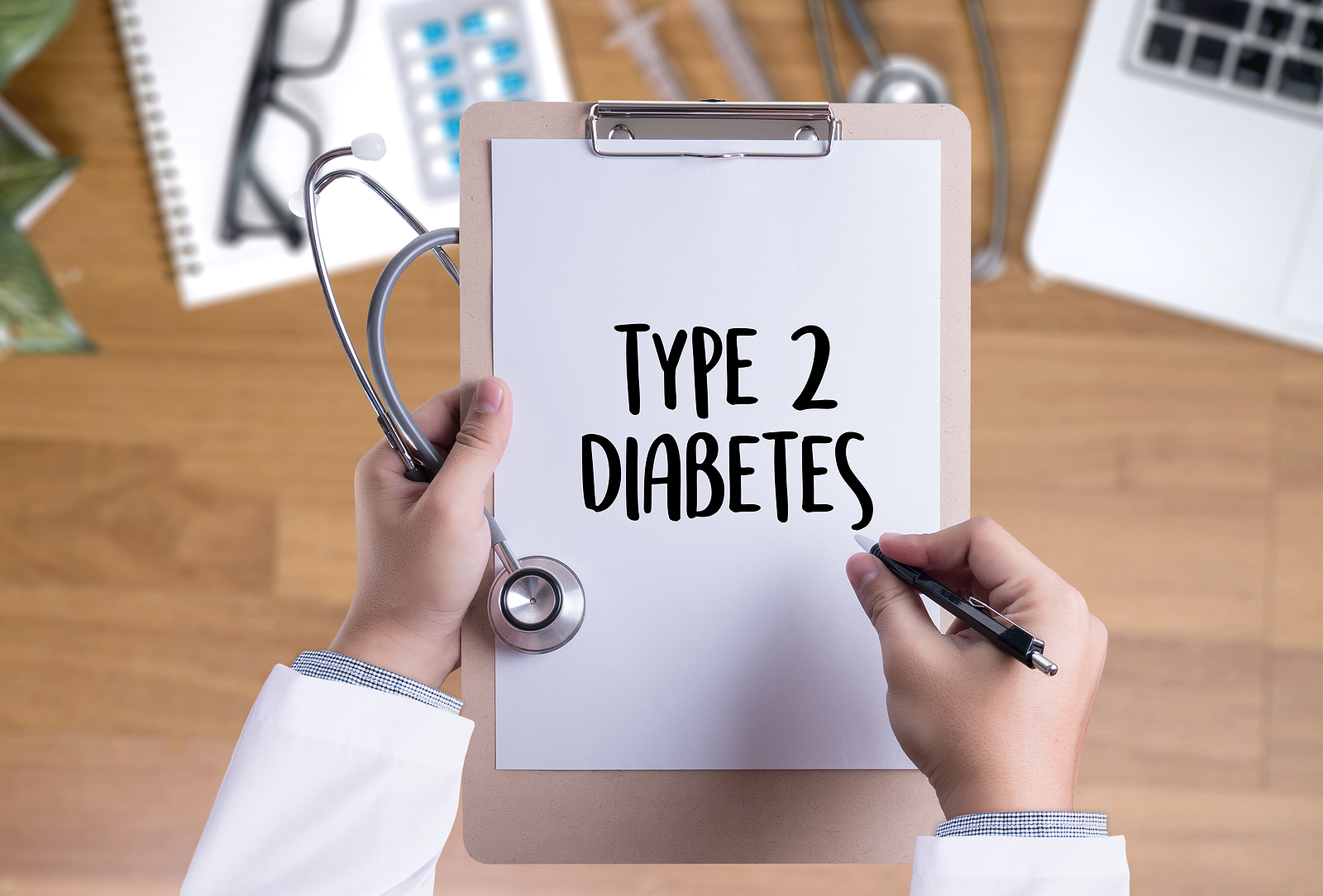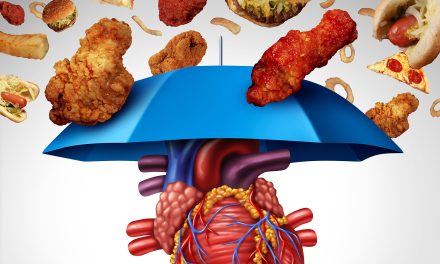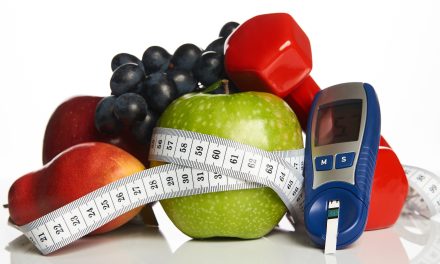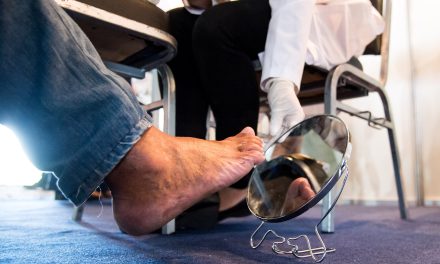Type 2 diabetes is a growing health concern affecting millions of people worldwide. It is characterized by high blood sugar levels and insulin resistance, which occur due to the body’s inability to use insulin effectively. While some may believe that reversing type 2 diabetes is impossible, recent research has shown that, in some cases, it can be done through a combination of lifestyle changes and medical interventions.

Managing type 2 diabetes successfully often starts with understanding the role of diet in blood sugar regulation and the importance of weight management. A well-balanced diet and regular physical activity are essential components of a healthy lifestyle, and in many cases, they can help in controlling blood sugar levels. However, in some instances, medical treatments, such as medications or insulin therapy, might be necessary to maintain normal blood glucose levels.
Key Takeaways
- Reversing type 2 diabetes may be possible through lifestyle changes and medical interventions.
- A well-balanced diet and regular physical activity play a crucial role in blood sugar regulation.
- The appropriate treatment approach should be personalized, considering factors like weight management and emotional health.
Understanding Type 2 Diabetes
Diagnosis and Blood Sugar Levels
Type 2 diabetes is a chronic condition that affects how your body processes glucose (sugar). It occurs when the body becomes resistant to insulin, a hormone that helps regulate blood sugar levels, or when the body doesn’t produce enough insulin. One common factor that contributes to insulin resistance is obesity.
Diagnosing type 2 diabetes involves measuring blood sugar levels. A person with a high blood sugar consistently over time may be diagnosed with diabetes. A blood sugar level that is elevated, but not high enough for diabetes, is considered prediabetes. In both cases, early detection and management are crucial to reduce the risk of complications.
Some common ways to measure blood sugar include:
- Fasting blood sugar test: This test measures blood sugar levels after an overnight fast.
- Oral glucose tolerance test: Blood sugar is tested after an 8- to 12-hour fast, and then again 2 hours after consuming a sugar-rich drink.
- HbA1c test: This test reflects the average blood sugar levels over the past 2-3 months.
Complications and Risk Factors
Type 2 diabetes can lead to several complications if not well-managed. Potential complications include heart disease, kidney damage, nerve damage, and vision problems. By keeping blood sugar levels within the target range, these complications can be minimized or even prevented.
Risk factors for developing type 2 diabetes include:
- Family history: If you have a parent or sibling with diabetes, you are more likely to develop the condition.
- Obesity: Excess weight, especially around the abdomen, increases the risk of insulin resistance.
- Physical inactivity: Lack of regular physical activity contributes to obesity and increases the risk of type 2 diabetes.
Managing type 2 diabetes often involves lifestyle changes such as adopting a healthy diet, regular exercise, and weight loss. In some cases, diabetes medication or insulin therapy may be required to maintain blood sugar levels within the target range. It is essential for individuals with type 2 diabetes to monitor their blood sugar levels and work with their healthcare provider to manage the condition effectively.
The Role of Diet in Diabetes Management
In managing type 2 diabetes, diet plays a crucial role. It is important to consume a balanced mix of nutrients to keep blood sugar levels within a healthy range. This section discusses the significance of a balanced diet, whole grains, and monitoring carbohydrate intake in diabetes management.
Balanced Diet and Whole Grains
A balanced diet is key to managing diabetes. It should consist of a variety of nutrients, including protein, carbohydrates, and healthy fats. Whole grains are an essential component of a diabetes-friendly diet due to their high fiber content and minimal impact on blood glucose levels. Examples of whole grains include brown rice, quinoa, barley, and whole wheat bread. A meal plan should also consist of lean proteins, such as chicken, turkey, tofu, and fish, as well as healthy fats found in nuts, seeds, and avocado. Consuming non-starchy vegetables like leafy greens, broccoli, and bell peppers can additionally provide valuable nutrients without drastically impacting blood glucose levels.
Monitoring Carbohydrate Intake
Managing carbohydrate intake is vital for controlling blood sugar levels. People with diabetes should focus on consuming complex carbohydrates like those found in whole grains, fruits, and some vegetables. These carbs are slowly digested, providing a steady flow of energy without causing rapid spikes in blood sugar. It’s important to avoid added sugars and limit the consumption of simple carbohydrates, such as white bread, pastries, and sugary beverages.
Here are some tips for monitoring carbohydrate intake:
- Keep track of daily carb intake by using a food diary or mobile applications designed for meal planning and tracking.
- Choose high-fiber options like whole grains, beans, and legumes. Fiber helps slow down the absorption of carbohydrates, resulting in steadier blood sugar levels.
- Be mindful of portion sizes and avoid overeating. Consuming excess calories can lead to weight gain, which can be detrimental to diabetes management progress.
- Incorporate non-starchy vegetables into meals to add volume, nutrients, and flavor without significantly impacting blood sugar levels.
Through thoughtful diet changes and proper calorie intake monitoring, it is possible to manage diabetes effectively. Including a balance of whole grains, complex carbs, lean proteins, and healthy fats in daily meals is crucial, as is keeping track of carbohydrate intake to maintain stable blood sugar levels.
Lifestyle Changes for Reversal
One of the key factors in reversing type 2 diabetes is making lifestyle changes, which often involve achieving a healthy weight, incorporating regular exercise, and being more physically active.
Achieving Healthy Weight
A major contributor to type 2 diabetes is being overweight or obese. Losing weight can help improve blood sugar levels and potentially reverse type 2 diabetes. One way to determine a healthy weight is by measuring your Body Mass Index (BMI). A person with a BMI below 24.9 is considered to be of healthy weight. Here’s a simple table of BMI categories:
| BMI Range | Category |
|---|---|
| Below 18.5 | Underweight |
| 18.5 – 24.9 | Normal weight |
| 25 – 29.9 | Overweight |
| 30 and above | Obese |
To achieve a healthier weight, focus on a balanced diet, avoid processed foods, and consume more fruits, vegetables, and whole grains. Portion control also plays a crucial role in weight management. Consider consulting a registered dietitian or nutritionist to create a personalized weight loss plan.
Regular Exercise and Physical Activity
Incorporating regular exercise and physical activity into your daily routine can significantly help in managing and potentially reversing type 2 diabetes. Exercise helps increase insulin sensitivity, allowing your body to use insulin more effectively and better control blood sugar levels.
Aim for at least 150 minutes of moderate-intensity aerobic exercise per week, such as brisk walking, swimming, or cycling. You may also include strength training exercises, such as lifting weights or using resistance bands, two to three times per week.
Physical activity should be part of your daily routine as well. Consider taking short breaks to walk or stretch throughout the day. Small changes, like taking the stairs instead of the elevator or parking farther away in a parking lot, can also help increase physical activity.
Incorporating these lifestyle changes — achieving a healthy weight and engaging in regular exercise and physical activity — are crucial components of a comprehensive treatment plan for type 2 diabetes. With commitment and persistence, these changes can significantly improve your health and potentially reverse the condition.
Medical Interventions
Medications and Insulin Therapy
For some people with type 2 diabetes, medical treatments like medications and insulin therapy can help reverse the disease’s progression. Diabetes medications work with the pancreas or improve the body’s sensitivity to insulin, ultimately helping regulate blood sugar levels. Examples of these medications include Metformin, Sulfonylureas, and DPP-4 inhibitors, among others. It is essential to consult a doctor for the appropriate prescription and dosage.
Insulin therapy might also be recommended to supplement the body’s natural insulin production. There are various types of insulin available, such as rapid-acting, short-acting, and long-acting types. Patients will need to work closely with their healthcare team to determine the right insulin type and dosage for their needs.
Here is a brief breakdown of some commonly prescribed diabetes medications:
- Metformin: Helps reduce glucose production in the liver and enhances insulin sensitivity.
- Sulfonylureas: Stimulates the pancreas to produce more insulin.
- DPP-4 inhibitors: Helps reduce glucose levels in the body.
Bariatric Surgery Options
In some cases, doctors may recommend bariatric surgery to reverse type 2 diabetes, especially if the patient has not achieved the desired results with lifestyle changes and medications. These surgical procedures aim to modify the digestive system in order to facilitate weight loss or improve the patient’s metabolism. The two most common types of bariatric surgeries are Gastric Bypass and Sleeve Gastrectomy.
Gastric Bypass, also known as Roux-en-Y Gastric Bypass, involves creating a small pouch in the upper part of the stomach and bypassing a significant portion of the small intestine. This leads to reduced food intake and less absorption of calories, resulting in weight loss and improved insulin sensitivity.
Sleeve Gastrectomy, on the other hand, involves removing a significant portion of the stomach to create a smaller, tube-shaped stomach. This procedure limits the amount of food a person can consume, thus aiding weight loss and better glucose control.
It is important to remember that bariatric surgery is not a one-size-fits-all solution for every patient with type 2 diabetes. A physician will assess the patient’s overall health, medical history, and treatment goals before determining if surgery is the most appropriate intervention.
Monitoring and Managing Blood Glucose

Monitoring and managing blood glucose is a crucial aspect of reversing type 2 diabetes. By keeping blood sugar levels within an ideal range, the body becomes more efficient in using insulin. This section will discuss self-monitoring practices and understanding A1C levels.
Self-Monitoring Practices
Self-monitoring of blood glucose (SMBG) is an essential tool for individuals with diabetes. Regular monitoring can help provide insights into how diet, exercise, and medication affect blood sugar levels. To perform SMBG, follow these steps:
- Wash your hands with soap and warm water. Dry well.
- Massage your hand to get blood into your finger.
- Prick the side of your fingertip with a lancet provided by your test kit.
- Collect a small drop of blood on the test strip and insert it into the meter.
- Read the blood glucose level displayed on the device after a few seconds.
Using alternate testing sites, such as the forearm or palm, may also be an option with some meters 1. Record the results regularly and share them with your healthcare team to make any necessary adjustments to your diabetes management plan.
Understanding A1C Levels
In addition to self-monitoring practices, it’s essential to understand the importance of A1C levels. A1C, also known as HbA1c or glycated hemoglobin, is a longer-term measure of blood glucose control. Doctors typically recommend individuals with diabetes to undergo an A1C test every 3-6 months 2.
The A1C test provides an average of blood glucose levels over the past two to three months. The goal for most people with diabetes is to maintain an A1C level under 7%. However, the target may vary depending on factors like age and other medical conditions 3.
It’s essential to discuss your individual A1C target with your healthcare team to ensure optimal blood glucose management.
By diligently incorporating self-monitoring practices and understanding the importance of A1C levels, individuals with type 2 diabetes can better manage their blood glucose levels, which is an integral step toward reversing the condition.
The Effects of Weight and Fat Distribution

Body Mass Index (BMI) Relevance
Body Mass Index (BMI) is a widely used tool for assessing whether an individual is underweight, normal weight, overweight, or obese. It is calculated by dividing a person’s weight in kilograms by the square of their height in meters. However, while BMI can provide a general understanding of a person’s body composition, it does not take into account variations in muscle mass and fat distribution. In the context of reversing type 2 diabetes, it is important to recognize that BMI may not tell the whole story.
A crucial factor in type 2 diabetes is the distribution of body fat. Studies have revealed that individuals with high amounts of abdominal fat, or visceral fat, are at a higher risk of developing type 2 diabetes, regardless of their BMI. This is because visceral fat around the organs contributes to insulin resistance, which is the primary cause of type 2 diabetes. Therefore, focusing on reducing abdominal fat should be a priority for individuals aiming to reverse their diabetes.
Personal Fat Threshold
An interesting concept related to fat distribution and type 2 diabetes risk is the Personal Fat Threshold (PFT). PFT suggests that each person has an individual limit of fat storage capacity, beyond which they start to develop insulin resistance and type 2 diabetes. This threshold is influenced by factors like genetics, age, and lifestyle.
A person’s PFT can help explain why some individuals develop type 2 diabetes even at lower BMI levels, while others remain metabolically healthy despite being overweight or obese. When someone reaches their PFT, their body can no longer efficiently store fat, leading to a detrimental fat redistribution in places like the liver and pancreas. This fat accumulation disrupts the normal functioning of these organs, promoting insulin resistance.
Understanding and identifying one’s PFT could be beneficial in reversing type 2 diabetes. By losing weight and reducing fat to levels below their own PFT, individuals may regain normal insulin sensitivity and achieve diabetes remission. Implementing a healthy lifestyle, which combines a well-balanced diet and regular physical activity, is crucial for maintaining a healthy weight and staying below one’s PFT.
Implementing a Low-Calorie Diet

Strategies for Caloric Reduction
When looking to implement a low-calorie diet to manage or reverse Type 2 diabetes, it’s essential to first assess your current calorie intake and identify areas where you can reduce calories. One significant aspect to consider is reducing alcohol consumption, as alcohol can contribute empty calories. Instead, focus on consuming nutrient-rich foods that can help in managing blood sugar levels.
Another useful strategy is to portion your meals, controlling the calories by eating smaller portions throughout the day. This can help you better manage hunger and prevent overeating. Additionally, low-calorie substitutes for high-calorie foods can be a great way to reduce intake without sacrificing taste or satisfaction.
Finally, consider following a low-carbohydrate diet as one of the ways of achieving caloric reduction. Low-carbohydrate diets focus on limiting processed and refined carbohydrates, which can help improve insulin sensitivity and blood sugar control.
Importance of Nutrient Density
Incorporating nutrient-dense foods into your low-calorie diet is essential for ensuring you receive adequate nutrition while reducing overall calorie intake. Consuming lean proteins, healthy fats, and plenty of vegetables can help strike a balance between appropriate caloric intake and optimal nutrition.
Here are some examples of nutrient-dense foods to include in your low-calorie diet:
- Proteins: Lean meats, fish, beans, lentils, and tofu.
- Healthy fats: Avocado, nuts, seeds, and olive oil.
- Vegetables: Leafy greens, broccoli, bell peppers, and zucchini.
Remember that regular exercise and stress management, along with diet changes, are also crucial components of a comprehensive approach to managing and potentially reversing Type 2 diabetes. With these strategies and a focus on nutritional quality, you can effectively implement a low-calorie diet designed to help you improve your health and manage diabetes.
Incorporating Exercise into Daily Routine

Exercise Guidelines for Diabetes
Individuals with type 2 diabetes should aim to exercise for at least 30 minutes per day for three to seven days per week. It is important to pick a specific time of day that works best for one’s schedule. This commitment helps with achieving consistency in a workout routine.
Recent studies have shown that adults with type 2 diabetes experience the most improvement in their glucose levels when they exercise in the afternoon, between 1:43 PM and 5:00 PM. However, it is crucial to remember that individual preferences and other lifestyle factors, such as sleep and diet, can also impact the effectiveness of exercise on blood sugar levels.
Here are some exercise suggestions for people with diabetes:
- Aerobic exercises: walking, swimming, dancing, cycling
- Strength training: resistance bands, weight lifting, bodyweight exercises
- Flexibility exercises: yoga, stretching routines, tai chi
Benefits of Regular Physical Activity
Incorporating regular exercise into one’s daily routine can provide numerous health benefits for people with type 2 diabetes, including:
- Improved blood sugar control: Exercise helps the body use insulin more effectively, lowering blood sugar levels.
- Increased insulin sensitivity: Regular physical activity can enhance the body’s responsiveness to insulin, reducing the need for medication.
- Weight loss: Exercise, along with a balanced diet, can help individuals shed excess pounds, making it easier to manage diabetes.
- Reduced risk of complications: Regular exercise can lower the risk of heart disease, nerve damage, and kidney issues related to diabetes.
- Mental health benefits: Engaging in physical activity can improve mood, decrease stress levels, and reduce symptoms of depression and anxiety.
It is crucial to remember that type 2 diabetes is reversible with diet and exercise. By incorporating regular exercise and making necessary lifestyle changes, individuals can experience better blood sugar regulation and overall improved health. Always consult with a healthcare professional before beginning any exercise regimen for personalized guidance and support.
Advanced Treatment Approaches

Latest Research and Clinical Trials
The management of type 2 diabetes has evolved significantly over the years, with new approaches emerging that challenge traditional practices. Recent research and clinical trials have investigated novel therapies and methods to help reverse the condition by targeting both its symptoms and its root causes.
One promising therapy focuses on the use of a low-calorie eating pattern to promote weight loss and improve blood glucose levels. A study has shown that adopting a low-carbohydrate diet can lead to short-term weight loss and overall improvement in glycemic control. Furthermore, researchers are exploring other treatment options to reduce cardiovascular mortality in patients with type 2 diabetes.
Role of Hormones and Beta Cells
Hormones and beta cells play a crucial role in the development and progression of type 2 diabetes. Insulin is a hormone produced by beta cells in the pancreas and regulates blood sugar levels by allowing glucose to enter the cells. In type 2 diabetes, the body develops insulin resistance or the beta cells fail to produce enough insulin, leading to elevated blood glucose levels.
Currently, there are no approved therapies that directly target beta cells to reverse type 2 diabetes. However, emerging research explores the potential of enhancing beta cell function to improve glycemic control. For example, a study conducted on type 1 diabetes patients found that a specific protein can stimulate beta cell growth and insulin production. This finding could potentially benefit type 2 diabetes patients as well, by addressing the root cause of their condition.
In conclusion, the field of diabetes treatment is rapidly advancing, and research continues to discover new and promising approaches. By focusing on the latest research, clinical trials, and the role of hormones and beta cells, we can better understand the potential for reversing type 2 diabetes and improving the lives of millions of people worldwide.
Addressing Emotional and Psychological Factors

Managing Stress
Stress has a significant impact on both the prevention and management of type 2 diabetes. Therefore, finding ways to manage stress effectively is an essential component of a comprehensive care plan. Examples of stress reduction techniques include mindfulness, deep breathing, and guided imagery. Practicing regular physical activity also helps in reducing stress levels and improving overall well-being.
In addition to stress management, it is crucial to maintain a balanced lifestyle. This can include getting regular check-ups, incorporating healthy habits into daily routines, and seeking emotional support from friends, family, or professional resources such as mental health therapists or support groups.
Effect of Smoking and Alcohol
Smoking and alcohol intake can have a detrimental impact on efforts to reverse type 2 diabetes. Research has shown that both smoking and excessive alcohol consumption can contribute to insulin resistance and inadequate blood sugar control. In order to effectively address these challenges, individuals seeking to reverse type 2 diabetes should consider reducing or quitting smoking, as well as limiting alcohol consumption.
Key Lifestyle Changes:
- Manage stress through mindfulness, relaxation techniques, and regular physical activity.
- Prioritize regular check-ups and mental health support.
- Reduce or quit smoking and limit alcohol intake.
By integrating these lifestyle changes and focusing on emotional and psychological factors, people with type 2 diabetes have the potential to significantly improve their health outcomes and work towards reversing the condition.
Frequently Asked Questions

What dietary changes can help reverse type 2 diabetes?
Dietary changes can play a significant role in reversing type 2 diabetes. Incorporating low-carb, high-fiber foods, lean proteins, and healthy fats into your diet can help manage blood sugar levels. Some studies have suggested that following a keto diet might help people with type 2 diabetes reverse the condition.
Can losing weight lead to a permanent reversal of type 2 diabetes?
Losing weight can help improve blood sugar levels and, in some cases, lead to the reversal of type 2 diabetes. However, it’s essential to maintain a healthy lifestyle and monitor glucose levels to ensure the remission of diabetes. Although remission does not guarantee a permanent reversal, it can help keep the condition under control.
Is it possible to reverse type 2 diabetes through diet alone?
Diet plays a significant role in managing and potentially reversing type 2 diabetes. However, a combination of diet, exercise, and weight loss usually yields the best results in achieving remission. It’s essential to consult with a healthcare professional to develop a personalized plan, which may include medication or other interventions.
How long typically does it take to see a reversal in type 2 diabetes symptoms?
The duration required to achieve reversal or remission of type 2 diabetes varies for each individual. Factors such as the degree of blood sugar control, the amount of weight loss, and the consistency of lifestyle changes can impact the time it takes to see improvements. Some people may notice a difference in weeks, while for others, it may take months or even years.
Are there any rapid methods that claim to cure type 2 diabetes and are they effective?
There are various methods claiming to cure type 2 diabetes rapidly, but it’s essential to approach them with caution. A healthy diet, exercise, and weight loss have been proven to be effective in managing type 2 diabetes, whereas extreme or fad diets can be dangerous or ineffective. Before trying any rapid method, consult with a healthcare professional to evaluate potential risks and benefits.
What are the differences between managing and reversing type 2 diabetes?
Managing type 2 diabetes involves controlling the symptoms and maintaining blood sugar levels within a healthy range through diet, exercise, and medication. Reversing or achieving remission of type 2 diabetes implies that you no longer meet the diagnostic criteria for diabetes and blood sugar levels return to normal or near-normal ranges without the need for diabetes medication. It’s essential to continue with a healthy lifestyle even after achieving remission to prevent relapse.
















